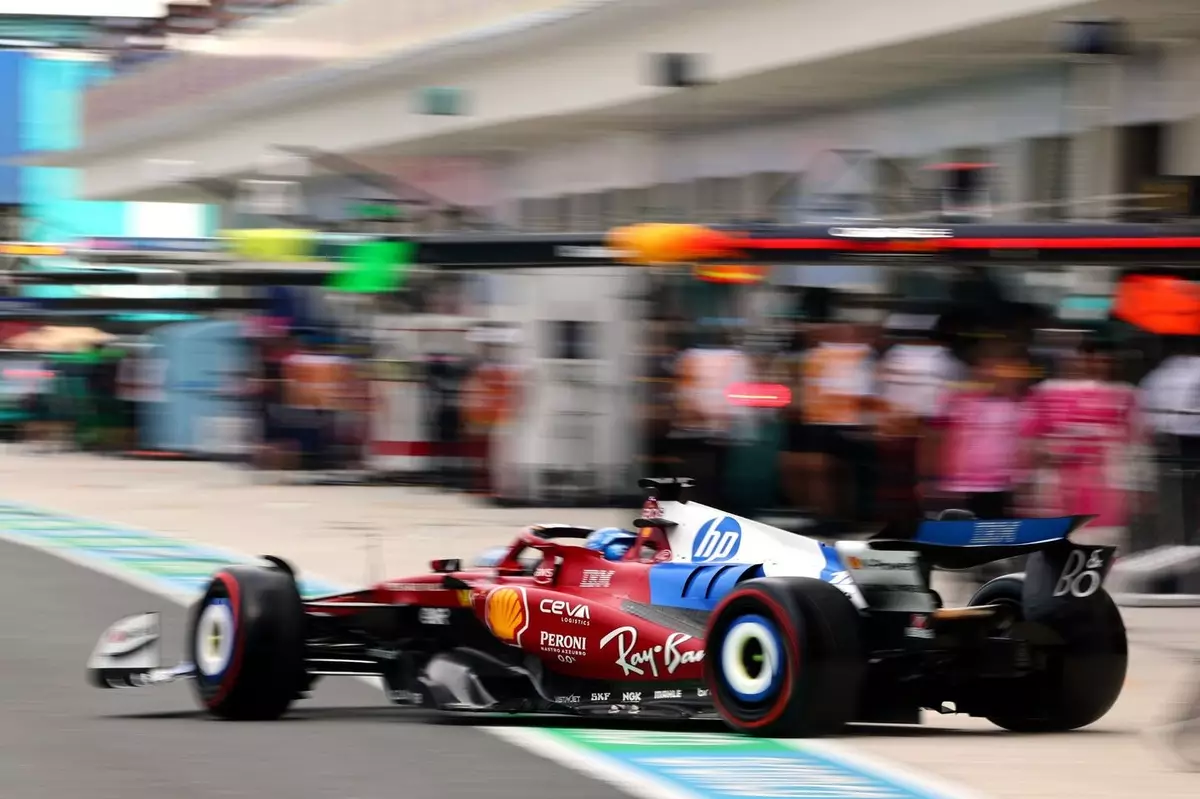The modern landscape of Formula 1 isn’t merely a battleground for speed; it’s a complex interplay of engineering marvel and driver skill. Charles Leclerc, the talented driver for Ferrari, recently spotlighted the stark reality facing him and his team as they maneuvered through the Miami Grand Prix. Despite the aspirations harbored by both Leclerc and the Scuderia, the realization of their limitations became painfully evident when he managed only an eighth-place start. His frustrations echoed like a siren: despite the team’s hard work, they are struggling to leverage the full potential of their car.
This notion of maximizing performance is critical for any racing team, especially one with the storied legacy of Ferrari. Leclerc’s assertion that they’re pushing the car to its limits yet are left trailing the pack, especially behind teams like Williams, raises profound questions about the underlying capabilities of the current vehicle. With Ferrari boasting significant resources and engineering expertise, the discrepancy in performance invites scrutiny regarding their development trajectory.
The Weight of Expectations
Ferrari’s expectations have always loomed large; they represent a symbol of racing excellence and ambition. However, when Leclerc describes his lap as satisfactory yet yields merely eighth position, it signifies an alarmingly inadequate realization of potential. Performance metrics are not just numbers on a sheet; they represent a driver’s hard work, the team’s expertise, and ultimately, the collective hopes of fans. Leclerc’s frustrations reflect not just a personal disappointment but also echo that of the entire team and its fandom who expect Ferrari to contend at the forefront.
What heightens this frustration is the realization that Ferrari’s challenges aren’t merely a one-off anomaly. Leclerc’s comments reveal a larger systemic issue—the car’s inherent lack of downforce compared to competitors like McLaren, Red Bull, and Mercedes. In a sport where every millisecond counts, not having the requisite aerodynamic performance spells disaster. The glaring contrast with their rivals becomes indicative of a strategic gap, one that Ferrari must urgently address if they are to remain in the conversation at the pinnacle of motorsport.
Track Characteristics Underscoring Weaknesses
This season, each race not only presents a new opportunity but also serves as a litmus test for the car’s adaptability and competitiveness. The Miami International Autodrome, with its notoriously slow corners, accentuated Ferrari’s deficiencies in a way that high-speed circuits may not. The irony lies in Leclerc’s previous success at the Jeddah street circuit; his ability to secure a podium finish there accentuates how a circuit’s design can favor certain performance characteristics that may not align with Ferrari’s current setup.
Leclerc’s insightful analysis post-race pinpoints the issue perfectly: „A track like this highlights our weaknesses.“ It’s a simple yet resounding statement that encapsulates the current narrative plaguing his team. As teams continually evolve their strategies to accommodate circuit characteristics, the inability to adjust effectively raises concerns. With competitors like Williams outperforming them, Ferrari must reevaluate their approach to car development and tuning.
Learning from Mistakes
Mistakes happen in high-stakes racing, and Leclerc’s unfortunate incident before the sprint race emphasizes this reality. Wet conditions can be treacherous, and the decision to run on intermediate tires with existing standing water underscored both a miscalculation and a warning. It’s an unfortunate illustration of how even seasoned professionals must navigate unpredictable conditions.
Leclerc’s acknowledgment of the team’s missteps offers a glimpse of accountability that is vital for growth. Understanding previous errors is the first step toward ensuring they’re not repeated. However, regardless of the collaboration and hard work, the pressing question remains: will they be able to innovate and improve their performance sufficiently to close the gap with their rivals? In the world of Formula 1, being reactive is not enough; teams must actively drive change to remain competitive.
Leclerc’s candid reflections reveal a deep-rooted frustration that extends beyond individual performance. The challenges faced by Ferrari signify a pivotal moment, a crossroads demanding reflection, innovation, and an unwavering commitment to transforming potential into competitive reality. As the season unfolds, the team must focus on strategic adjustments and agility, or risk surrendering their competitive edge in an increasingly demanding sport.


Napsat komentář